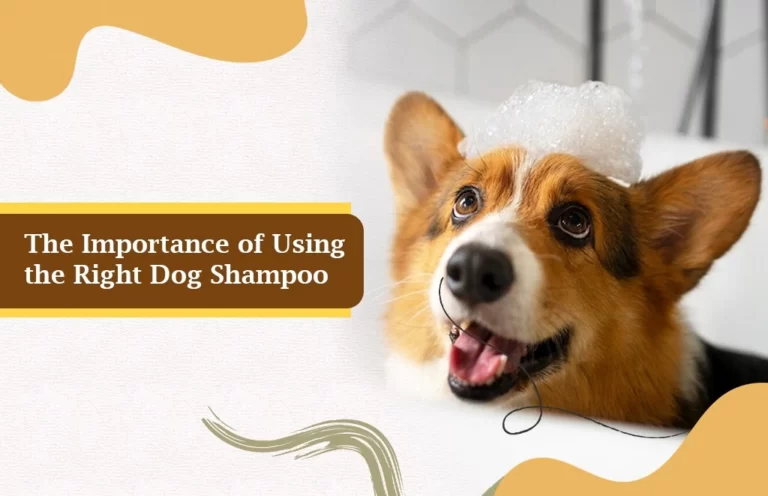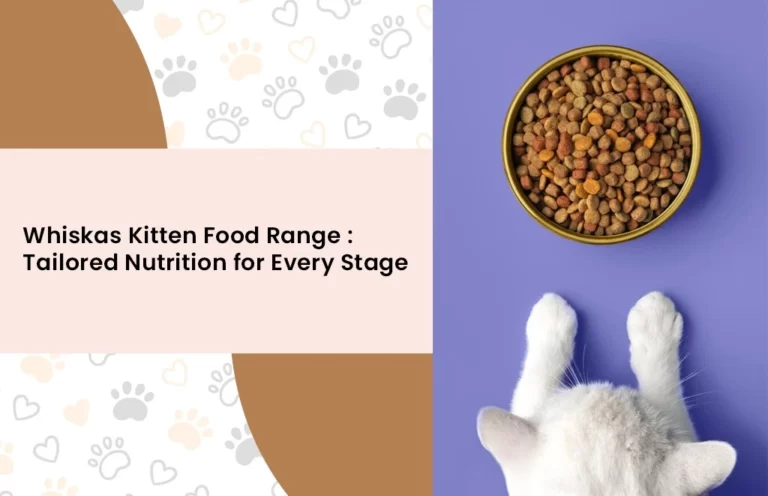The Best Dog Treats for Training, Rewarding, and Spoiling Your Pup
Table of Contents
- Introduction
- Use of Dog Treats in Puppy Training
- Considerations for Selecting Dog Treats
- LIST OF 10 DOG TREATS THAT PUPPIES LOVE
- Some Homemade Dog Treat Recipes
- Precautions and Storage Recommendations
- FAQs
- Conclusion with Call to Action
Introduction
Bringing a new puppy into your home is an exciting and rewarding experience. Still, it also comes with its challenges, especially when it comes to training. Dog treats are among the most effective tools in your puppy training toolkit. Not only are they a fantastic way to motivate and reward your furry friend, but they can also be a source of joy for your pup. In this guide, we will explore the best dog treats available in India, along with homemade options, safety precautions, and more.
Use of Dog Treats in Puppy Training
- Positive Reinforcement : Dog treats are a powerful form of positive reinforcement. When your puppy performs a desired behaviour or follows a command correctly, immediately reward them with a treat. Positive reinforcement works by associating the treat with the behaviour, making your puppy more likely to repeat that behaviour. For example, if you teach your puppy to sit, give them a treat and offer verbal praise when they sit on command. This creates a positive connection between sitting and receiving a reward in your puppy’s mind, making them more inclined to sit when asked.
- Inspiration: During training sessions, treats are an excellent motivator. Puppies, like people, may grow disinterested or quickly distracted. Offering sweets as incentives keeps them interested and willing to participate in training sessions. It adds a fun and exciting aspect to the learning process.
- The Importance of Timing : Timing is one of the most critical aspects of successful puppy training with rewards. Treats should be provided following the desired behaviour soon to ensure your puppy links the reward with the proper activity. If you wait too long, your puppy may not register what it is being rewarded for.
- Consistency : Consistency is key in puppy training. Use the same command language and manage rewards similarly to prevent misunderstandings. For example, if you use the command “sit” and then reward with a treat for that specific action, you should always use “sit” and then reward with a treat.
- Command Variety : Treats may be used to teach a wide range of commands and activities, from simple obedience commands such as “sit,” “stay,” and “come” to more complicated tricks such as “rollover” or “shake hands.” Treats are malleable and may be tailored to your puppy’s training requirements.
- Gradual Decrease : As your puppy becomes more proficient in following commands, you can gradually decrease the frequency of treats. This is known as “weaning off” treats. Instead of giving a treat every time, reward with a treat intermittently, and eventually, rely on verbal praise and affection as the primary rewards. This transition helps maintain the desired behaviours without over-reliance on treats.
- Choosing the Right Treats : Select treats that are both appealing to your puppy and suitable for training. Treats should be small, easy to chew, and quick to swallow to minimize interruptions during training sessions. Additionally, opt for treats made from high-quality ingredients, free from artificial additives or fillers, to ensure your puppy’s health and well-being.
Considerations for Selecting Dog Treats
- Ingredients and Quality : Quality is essential for dog treats. Read the ingredient list on the treat container at all times. Seek out goodies that are prepared with high-quality, natural ingredients. Treats with artificial additions, preservatives, or fillers should be avoided. Choose selections with readily identifiable components, such as real meat, veggies, and whole grains.
- Size and Texture : The treat’s size and texture should suit your dog’s age, size, and chewing abilities. Smaller, bite-sized treats may be preferred by smaller breeds, while larger dogs may handle bigger ones. Consider your dog’s dental health as well; some dogs benefit from chewable treats that improve oral cleanliness.
- Consider the objective of the treatment : Is it used for exercise, a snack, or a specific health benefit? Smaller, lower-calorie snacks are ideal for exercising to avoid overeating. You might select items that improve dental health or provide additional nourishment as daily snacks.
- Food Restrictions and Allergies : Remember if your dog has any food allergies or dietary limitations. Some dogs are allergic to common foods, including wheat, soy, and specific proteins. Select foods that are specifically designed to satisfy your dog’s dietary sensitivity.
- Caloric Content : Keep an eye on the caloric content of the sweets. Snacks are great for reward and training, but consuming too many can result in weight gain. Treats should only comprise a small portion of your dog’s daily calorie intake. Please consult your veterinarian to determine your dog’s appropriate daily treat allocation based on size, age, and activity level.
- Flavour Preferences : Just like humans, dogs have flavour preferences. Keep an eye out for Flavors that your dog enjoys. Some dogs like chicken, whilst others prefer meat or fish. Knowing your dog’s preferences will allow you to train and reward him more effectively.
- Health Advantages : Certain dog treats are designed to give specific health advantages, such as joint support, skin and coat health, or dental care. Consider your dog’s particular demands and select rewards that meet those needs.
- Brand Reputation : Research and select renowned companies known for their dedication to pet nutrition and safety. To guarantee that the treats you choose are of good quality, read customer reviews and seek advice from veterinarians or other dog owners.
- Cost : While quality is important, keep your budget in mind. Dog treats are available at various pricing points. Find treats that give you the quality and advantages you want without breaking your wallet.
- Treat variety : Dogs, like humans, enjoy variety. Consider introducing a variety of treats to keep your dog excited and motivated during training and snack time. This prevents boredom and can be particularly helpful for picky eaters.
LIST OF 10 DOG TREATS THAT PUPPIES LOVE
- Himalaya Healthy Puppies Chicken Flavoured Treats (500g) – 169 INR
- Adult Medium Breed Dog Treat Oral Care (28 Sticks) by Pedigree – 640 INR
- Drools 720G Chicken Monthly Pack Dog Treats For All Life Stages, Absolute Calcium Bone Jar – 40 pieces (600g) – 365 INR
- Adult Large Breed Dog Treat Oral Care (28 Sticks) by Pedigree Monthly Chicken Pack 1.08Kg – 856 INR
- Meat Up Chicken Flavour Real Chicken Biscuit (Buy 1 Get 1 Free ) – INR 359
- Milk-Bone MaroSnacks Dog Snacks – Small, 40-Ounce – 3545 INR
- Meat Up Munchy Sticks, Chicken Flavour, Dog Treats For All Life Stages, 400g (Buy 1 Get 1 Free) – 233 INR
- Chewers Oven Baked Real Mutton Adult Dog Biscuits, Mutton Flavour, Dog Treat 1 Kg – 220 INR
- Nootie Freshly Baked Real Chicken and Peanut Butter Cookie/Biscuits for All Life Stages of Dogs, (1kg) Pack of 1– 100 INR
Some Homemade Dog Treat Recipes
1. Dog Treats Made From Frozen Yogurt
Ingredients:
- 1 cup unsweetened yoghurt
- 1/2 banana, mashed
- 1 tablespoon peanut butter
Instructions:
- Using parchment paper, line a baking sheet.
- Drop the yoghurt mixture onto the baking sheet in rounded teaspoons.
- Freeze the treats for 2-3 hours or until they are solid.
- Give your dog frozen or thawed goodies.
2. Mouth-watering Popsicles with bananas and honey:
Ingredients:
- 2 ripe bananas
- 1 teaspoon of honey
- 1 cup of plain yoghurt
Instructions :
- In a blender, combine ripe bananas, honey, and plain yoghurt.
- Blend the ingredients until it is smooth.
- Half-fill ice moulds with the mixture.
- Freeze the popsicle moulds in the freezer until they are solid.
- Take the frozen popsicles from the freezer and serve them to your dog.
3. Sweet Potato-Based Dog Chews:
Ingredients:
- Sweet potatoes
Instructions:
- Heat your oven to a low temperature, around 250°F (120°C).
- Clean and peel some sweet potatoes.
- Cut them into thin slices or strips, about 1/4 inch wide.
- Lay these sweet potato pieces on a baking sheet covered with parchment paper, ensuring they’re not on each other.
- Bake them for 2-3 hours until they’re dry and chewy.
- Let the sweet potato chews cool down before giving them to your dog. Store any extras in a sealed container.
4. Biscuits made with oatmeal and salmon:
Ingredients:
- 1 can of pink salmon flakes drained
- 1 cup of oat flour (just some rolled oats powdered finely)
- 1 egg
Instructions:
- First, line a baking sheet with parchment paper and heat your oven to 350°F (175°C).
- Salmon flakes, oat flour, and egg should all be combined in a mixing bowl to form a dough.
- Roll out the dough to a thickness of approximately 1/4 inch on a surface dusted with flour.
- Use cookie cutters to create the desired biscuit shapes.
- The baking sheet should be used for these biscuits.
- They should be firm and just starting to colour after 20 to 25 minutes of baking.
- Allow the biscuits to cool before feeding them to your dog.
Precautions and Storage Recommendations
- Quality Ingredients: Only use high-quality, dog-safe ingredients when making homemade dog treats. Chocolate, grapes, raisins, onions, garlic, and artificial sweeteners like xylitol are all potentially toxic to dogs.
- Allergies: Be conscious of your dog’s allergies and food sensitivities. If unsure, consult your veterinarian before adding new components to your dog’s food.
- Supervision: Watch for any negative responses when giving your dog homemade goodies for the first time. This is especially true when introducing new components or recipes.
- Size and form: Consider the size and shape of the snacks. To avoid choking dangers, ensure they are appropriate for your dog’s age and size.
- Homemade treats should not be used in place of your dog’s regular meals. They should be administered in moderation as dietary supplements.
- Baking Safety: Ensure your dog is kept away from the kitchen when baking treats. Some ingredients, like baking powder or raw dough, can harm dogs.
- Cooling Period: Allow the treats to cool completely before serving them to your dog. Hot treats can cause mouth burns or discomfort.
- Storage: Store treats in an airtight container to maintain freshness and prevent spoilage. Proper storage helps prevent contamination and preserves the treats’ flavour.
Instructions for Storage:
- Cool Before Storing: Ensure homemade dog treats are cool before storing them. Warm treats can cause condensation, which can lead to spoiling.
- Airtight Containers: Use airtight containers or resealable bags to store the snacks. This helps to limit air and moisture exposure, which can lead to staleness or mould development.
- Labelling: If you make multiple goodies, label the containers with the item’s name and date. This guarantees that the oldest sweets are used first.
- Store the snacks in a cool, dry location away from direct sunlight or heat sources. Avoid keeping them in high-humidity places.
- Check the stored treats regularly for any symptoms of spoiling, such as mould, odd scents, or colour changes.
FAQs
Are all dog treats acceptable for all breeds and sizes of dogs?
Not all dog treats are the same. Selecting treats appropriate for your dog’s size, age, and nutritional requirements is critical. Smaller dogs may prefer smaller goodies, but bigger dogs can handle larger ones.
Can I use dog treats as my puppy’s primary source of nutrition?
Dog treats should not be substituted for your puppy’s primary meals. Treats should be provided sparingly and as a complement to their regular diet.
What are some common allergy symptoms to look out for when introducing new treats?
Allergic reactions might cause itching, vomiting, diarrhoea, or skin irritation. If your dog exhibits these symptoms after receiving a new treat, cease use and visit your veterinarian.
How many rewards should I give my dog when training?
The amount of treats used during training is determined by the length of the session and the size of your dog. To minimize overfeeding, split sweets into little pieces and offer them sparingly.
Are there any specific treats recommended for senior dogs?
Yes, there are treats specially designed for senior dogs. These treats often include joint-supporting ingredients like glucosamine and chondroitin to aid mobility.
Can I give my dog treats daily or limit them?
It’s best to limit treats to avoid excessive calorie intake. Treats can be given daily, but portion control is crucial to maintain your dog’s health.
Are there any treats that can help with dental health?
Yes, dental treatments are designed to promote oral hygiene by reducing tartar and plaque buildup. Look for treats with added dental benefits.
What should I do if my dog swallows a treat whole without chewing?
If your dog swallows a treat whole, monitor them for any signs of distress. If they exhibit discomfort, contact your veterinarian immediately.
Can I treat my dogs if they have a sensitive stomach?
For dogs with sensitive stomachs, it’s best to choose treats with limited ingredients and avoid those that contain common allergens. Consult your vet for suitable options.
Can any treats help with my dog’s bad breath?
Dental treatments can help freshen your dog’s breath by reducing plaque and tartar buildup. Additionally, some treats are formulated with mint or parsley for added breath-freshening benefits.
Conclusion with Call to Action
Choosing the right dog treats is essential for your puppy’s health, happiness, and training success. Remember to consider your puppy’s specific needs and preferences when selecting treats. Whether you choose store-bought options or homemade goodies, your dog will appreciate the extra love and attention.
Don’t wait; start exploring the world of dog treats today! Visit Amazon India to find the best treats for your puppy and embark on a rewarding journey of training, rewarding, and spoiling your pup.
[Call to Action] Click here to explore a wide range of dog treats on Amazon India and make your puppy’s training and rewarding experiences even more enjoyable!







